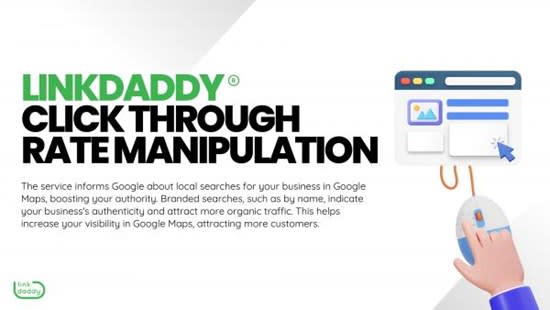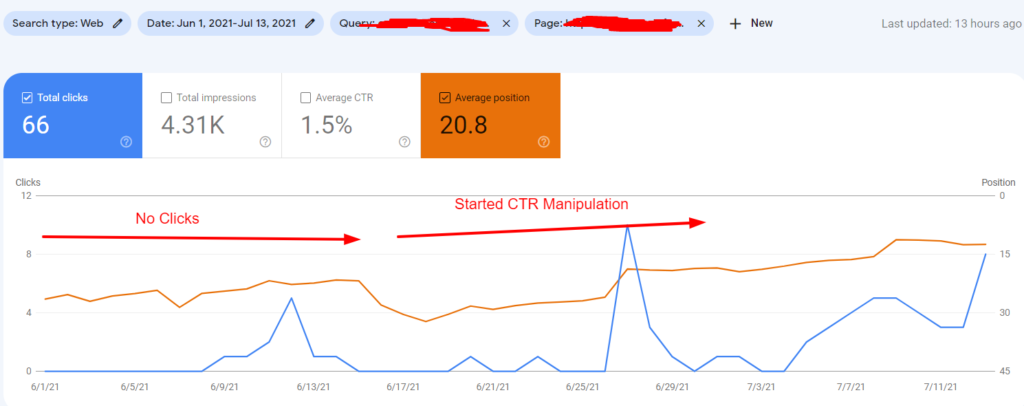CTR Manipulation: A Video Game Changer for Digital Projects
The increase of CTR control has undeniably transformed digital advertising and marketing strategies, offering marketing experts with tools to enhance engagement and drive web traffic efficiently. What effects might this balancing act hold for the future of digital projects?
Recognizing CTR Control
Although click-through rate (CTR) adjustment may appear like a straightforward technique in digital marketing, it encompasses a series of methods intended at unnaturally blowing up interaction metrics. This control can take numerous kinds, including using click farms, crawlers, or deceitful ad placements that mislead consumers right into clicking. These approaches can endanger the stability of performance information, making it testing for marketing professionals to assess the authentic performance of their projects.
In addition, CTR adjustment increases moral worries, as it undermines the openness of digital advertising. The reliance on filled with air metrics can cause misdirected advertising and marketing decisions, skewing source allowance and campaign methods. Businesses may spend heavily in channels and tactics that appear successful yet do not yield real interaction or conversions.

Benefits of Click-Through Price Optimization
Enhancing click-through price (CTR) is important for improving the efficiency of digital advertising campaigns. A higher CTR suggests that a bigger percentage of individuals are involving with the content, which can cause raised internet site traffic and much better conversion prices. By enhancing CTR, brand names can successfully allocate their marketing resources to efforts that yield the highest possible returns.
One of the primary benefits of CTR optimization is the potential for enhanced advertisement positioning and lower expenses - CTR Manipulation. Systems like Google Advertisements reward greater CTRs with better advertisement positioning and minimized cost-per-click (CPC), allowing online marketers to stretch their budgets further. In addition, a well-optimized CTR can boost brand name visibility, as greater engagement prices frequently associate with increased organic reach

Techniques for Effective CTR Manipulation
To efficiently adjust click-through prices (CTR), marketing professionals can employ a selection of calculated strategies that improve individual interaction and drive web traffic. One essential technique is maximizing advertisement duplicate to develop compelling and action-oriented language. CTR Manipulation. Utilizing strong call-to-action (CTA) expressions motivates users to take their website prompt activity, raising the chance of clicks
Another effective strategy is A/B screening, which allows marketing experts to compare various advertisement variations. By methodically assessing performance metrics, they can determine which elements resonate ideal with the target audience, thereby fine-tuning their techniques for maximum impact. Furthermore, leveraging aesthetically appealing graphics and succinct messaging can record attention promptly, making it much more likely that users will certainly engage.

Last but not least, optimizing touchdown pages to guarantee a seamless individual experience can reduce bounce rates and urge additional interaction, eventually fostering greater CTR. By incorporating these techniques, marketing professionals can properly control CTR to attain their campaign goals.
Gauging Success in Digital Projects
Gauging success in digital campaigns needs a clear understanding of essential performance indications (KPIs) that align with campaign objectives. KPIs serve as measurable metrics that help assess the performance of different strategies employed throughout the project. Typical KPIs include click-through prices (CTR), conversion prices, expense per acquisition (CPA), and roi (ROI)
To efficiently determine success, it is essential to establish certain, measurable objectives at the outset of the project. For example, if the main purpose is to enhance brand understanding, metrics such as impressions and engagement prices might be prioritized. In contrast, projects concentrated on direct sales would certainly gain from a more in-depth evaluation of conversion rates and profits created.
Routine evaluation of these KPIs allows online marketers to make data-driven decisions, maximizing their strategies in real-time. Using logical devices can help in tracking performance and determining trends, permitting quick adjustments to boost campaign outcomes. Ultimately, a thorough approach to gauging success not just highlights areas for enhancement yet additionally strengthens the total efficiency of electronic advertising and marketing initiatives, driving sustained development and involvement in the long-term.
Future Trends in Digital Marketing
Anticipating the future of digital advertising and marketing discloses a landscape shaped by quick technological developments and changing customer behaviors. As expert system and artificial intelligence remain to evolve, marketing professionals will progressively leverage these innovations to personalize campaigns at an extraordinary scale. Anticipating analytics will make it possible for brands to Get More Info prepare for client requirements, maximizing ad placements and content shipment in real time.
Furthermore, the surge of voice search and smart tools is changing how consumers interact with electronic material. Marketers will certainly need to adjust their approaches to make certain presence throughout multiple platforms, including voice-activated aides. This shift requires a concentrate on conversational advertising, stressing engagement via dialogue instead of traditional marketing methods.
In addition, privacy issues are triggering changes in data collection techniques. Openness and ethical data use will certainly come to be extremely important, driving brands to cultivate trust and commitment amongst consumers. The continuous evolution of social media systems will certainly likewise affect advertising and marketing techniques, with an enhanced emphasis on credibility and user-generated content.
Final Thought
In recap, CTR manipulation represents a substantial improvement in digital advertising strategies, supplying instant benefits with enhanced engagement metrics. The continuous evolution of digital advertising and marketing will depend on this fragile interplay, forming the future landscape of brand-consumer communications.